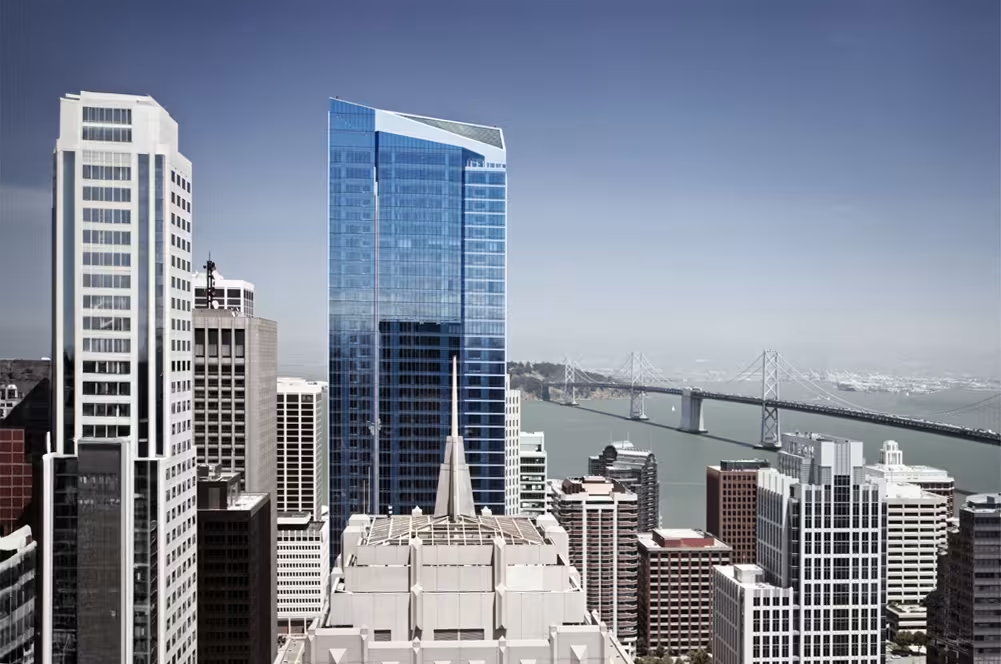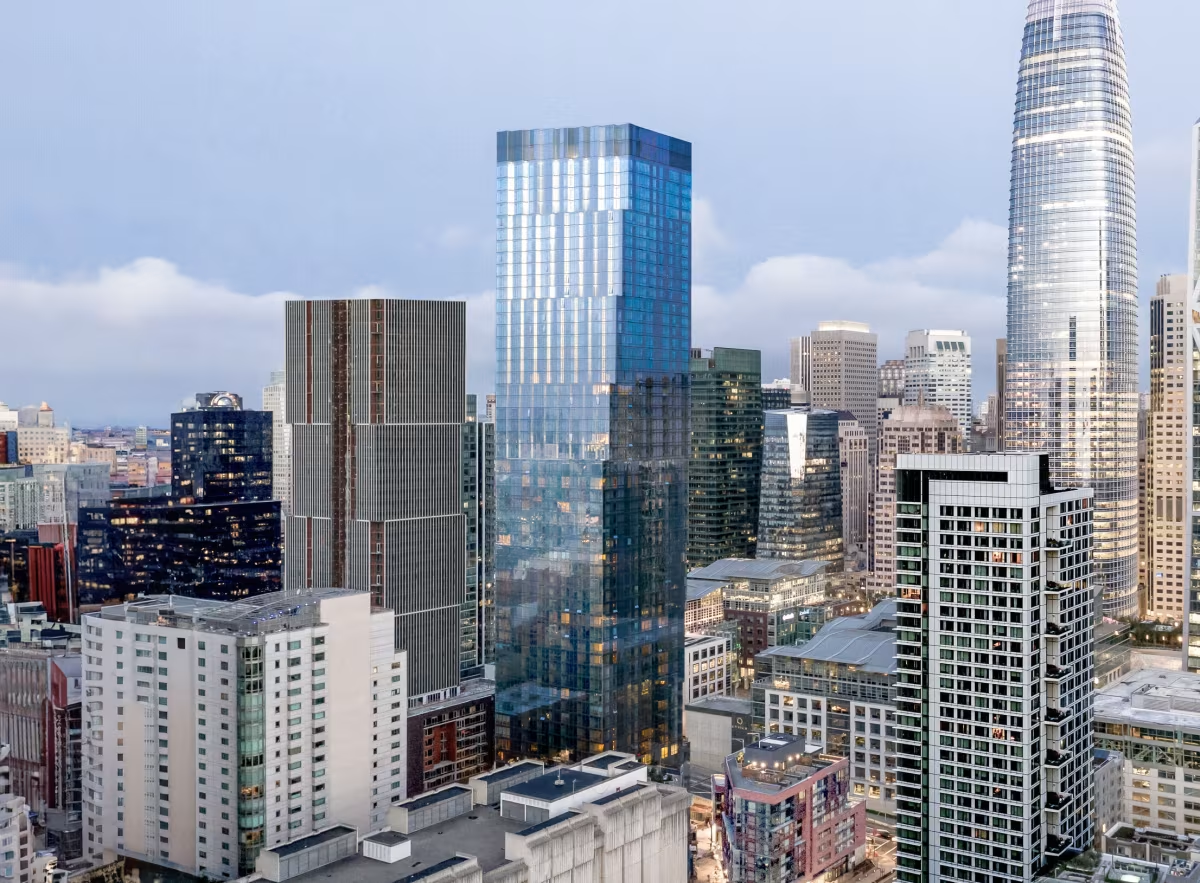Millennium Tower vs The Avery Building


Comparing the Millennium Tower and the The Avery Building is interesting because they both rise in San Francisco, CA, yet they were conceived by two different design teams, Handel Architects and OMA, and were completed at different points in time. They were finished more than a decade apart.
This contrast within the same city allows us to see how different creative minds interpreted the evolving needs of San Francisco across time.
Let's take a closer look!
Height & Size
These two towers present an interesting contrast in their proportions. The The Avery Building rises higher at 617ft (188m), while the Millennium Tower reaches 604ft (184m). However, the Millennium Tower accommodates more floors with 58 levels above ground, compared to 56 floors in the The Avery Building.
This suggests different approaches to interior space design. The The Avery Building has an average floor-to-floor height of approximately 3.4m, while the Millennium Tower has more compact floors averaging around 3.2m each.
These different proportions likely reflect the specific needs each building was designed to serve, whether driven by zoning regulations, client requirements, or the intended use of the spaces within. The contrast shows how architects can achieve different spatial experiences even when working with similar overall building scales.
Architectural Style
Both the Millennium Tower and the The Avery Building were designed in line with the aesthetic conventions of the Contemporary style.
At the time, this style was at the height of its popularity. So both Handel Architects and OMA followed what was in many ways expected of them, producing designs that fit comfortably within contemporary architectural norms, rather than breaking with convention.
Uses
Both the Millennium Tower and the The Avery Building are primarily residential towers, serving similar roles in the urban fabric.
In terms of capacity, the Millennium Tower offers 419 apartments, while the The Avery Building provides 548 units.
Both towers provide significant parking capacity, with Millennium Tower offering 340 spaces and the The Avery Building offering 218.
Structure & Facade
Both the Millennium Tower and the The Avery Building rely on a Frame structural system.
A frame structure uses a grid of columns and beams to carry the building's loads. This frees the walls from structural duties, allowing for flexible floor plans and larger windows.
They also employ the same type of facade, a Curtain Wall facade.
A curtain wall is a non-load-bearing facade hung from the structural frame. It is anchored to floor slabs and transfers only its own weight and wind loads, allowing for sleek, glassy exteriors.
| Millennium Tower | The Avery Building | |
|---|---|---|
| Handel Architects | Architect | OMA |
| 2005 | Construction Started | 2014 |
| 2009 | Year Completed | 2019 |
| Contemporary | Architectural Style | Contemporary |
| Residential | Current Use | Residential |
| 58 | Floors Above Ground | 56 |
| 5 | Floors Below Ground | 1 |
| 184 m | Height (m) | 188 m |
| 107,000 m² | Usable Area (m²) | 84,214 m² |
| 419 | Residential Units | 548 |
| Frame | Structure Type | Frame |
| Concrete | Vertical Structure Material | Concrete |
| Concrete | Horizontal Structure Material | Concrete |
| No | Facade Structural? | No |
| Glass, Metal | Main Facade Material | Glass |
| Mission Street Development, LLC | Developer | Related California, And Tenderloin Neighborhood Development Corporation |
| DeSimone Consulting Engineers | Structural Engineer | MAgnusson Klemencic Associates |
| CA | State | CA |
| San Francisco | City | San Francisco |
| 301 Mission Street | Address | 488 Folsom Street |